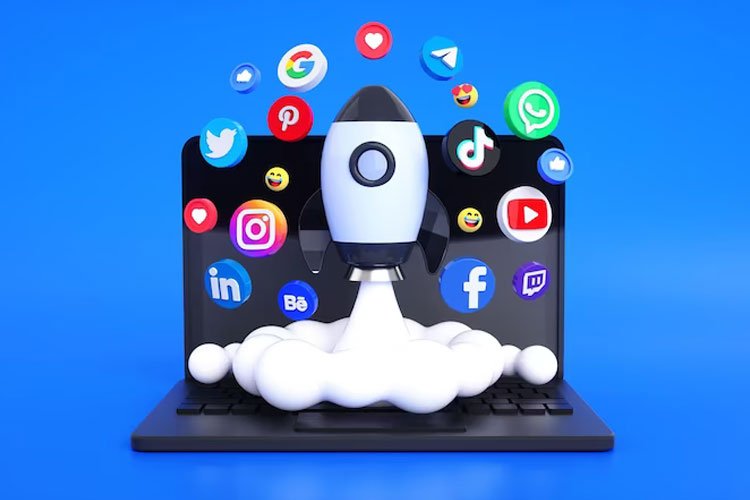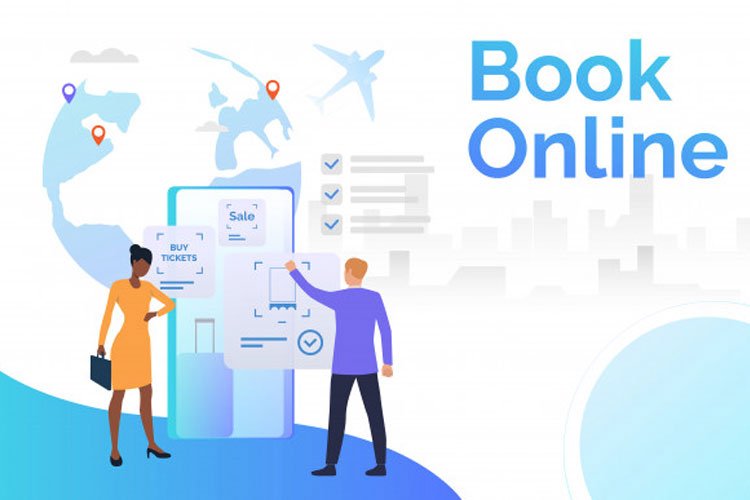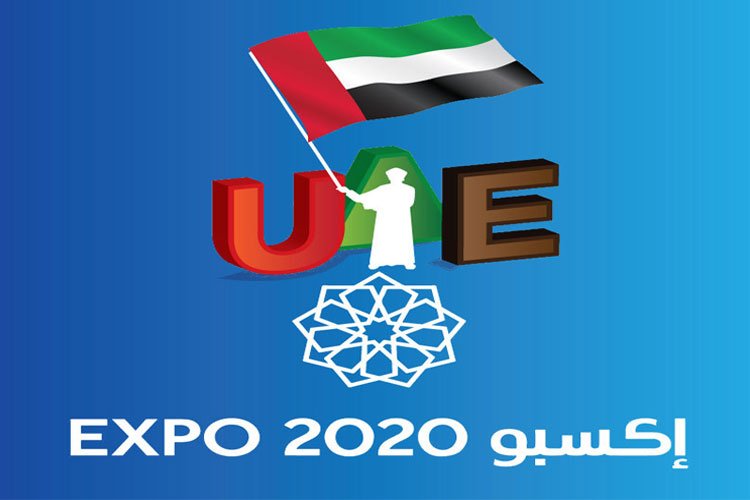Introduction & Purpose
Knowledge update and Industry update at Skyline University College (SUC) is an online platform for communicating knowledge with SUC stakeholders, industry, and the outside world about the current trends of business development, technology, and social changes. The platform helps in branding SUC as a leading institution of updated knowledge base and in encouraging faculties, students, and others to create and contribute under different streams of domain and application. The platform also acts as a catalyst for learning and sharing knowledge in various areas.
Prof. Raid Al-Adaileh
Information Systems
With 2.3 billion users, Facebook is the most popular social media platform today. YouTube, Instagram, and WeChat follow with more than a billion users. Tumblr and TikTok come next, with over half a billion users (Statista Report, 2019).
Dr. Manas Pradhan
Information Systems
Any disease is generally caused to humans because of biological disorders. These diseases may be an infection from external factors due to deficiency in chemical components, physiological changes or heredity.
Dr. Sharon (Shaimah) Mendoza Dreisbach
Travel and Tourism
Following the affordability of traveling by air, more patients are now able to roam around the world whenever their hearts desire (Dreisbach, Vij, & Dreisbach, 2020).
Dr. Kakul Agha
From Different Corners
Happiness in the workplace is a buzz word nowadays. Forums, discussions, workshops, and seminars are organized to guide us to the path of happiness. But is it really happening? This is a key question.
Enhancing happiness needs a sneak peek in PERK where P stands for purpose, E for Engagement, R for Resilience, and K for Kindness. These four elements account for the happiness of employees in contemporary workplaces. A successful manager and enthusiastic workforce aim to attain PERK in order to be happy in the workplace. But again we stop to ask how to use PERK. Let me elaborate!
Every organization frames a mission and vision for achieving a set of goals. So it is important for employees to reflect on their core values and feel purposeful at work. Managers must instill a sense of passion and purpose through ethical means in the way employees perform their work. Further, the manager could also promote purpose by making core values explicit at the workplace, and implementing policies that align people’s day-to-day experiences with core values. As Swarthmore College Professor Barry Schwartz explains, we want to see how our progress is tied to meaningful, important, and self-transcendent impact in the world.
Engagement at work comes with enjoyment and fun. Managers and employees should include some playfulness, creativity, humor, and levity at work. It is also vital to develop a sense of ownership among employees. Flow at work is critical and organizations are now moving from hectic, meeting-clogged, multitasking and devise-notification laden schedule to more encouraging and uninterrupted periods of deep work concept. Some international organizations like Southwest Airlines and Zappos have earned a reputation for engaging employees in positive ways.
Resilience is all about bouncing back to normal performance and productivity after setbacks and failures. The best technique for doing this is mindfulness. Being mindful can be the starting point of having a better opinion of self, revising our old learned habits of self-criticism and self-blame.
Managers can create a culture of being mindful. Further, employees can also be authentic in order to be more mindful. Mindfulness can be enhanced through non-work related wellness and charitable activities. Adobe’s Project Breath is all about building and sustaining mindfulness among the employees.
Our last tenet of happiness at work is kindness. Being kind at work is practicing empathy and compassion, treating colleagues with dignity and respect, practicing gratitude and handling conflicts positively and constructively. Employees are urged to be good listeners and effective team players. Apologies also enhance respect and commitment in building trust and happiness at work. Georgetown University Professor Christine Porath’s book Mastering Civility explains being civil means building trust; sharing resources, feedback, and credit; and being a good listener. For leaders, civility skills are critical to avoiding the corruptive influence of gaining power.
Research shows happiness at work in essential for organizational success and achievement of its KPIs, mission, and vision. Using the tenets of PERK can enable enhanced happiness among employees at the workplace.
Ms. Nadine Felix
From Different Corners
Educational institutions are powerful generators of dominant ideologies and as such produce practices that both exclude and include. One of the ways that class and social privilege is reproduced is explained by Bourdieu’s (1984) notion of cultural capital. A widely used definition of cultural capital stems from Lareau and Lamont who indicate that cultural capital is ‘institutionalized, that is, widely shared, high status cultural signals (attitudes, preferences, formal knowledge, behaviors, goods and credentials) used for social and cultural exclusion’. Aspects such as attitudes, preference and behaviors are usually learnt from one’s home and community. Educational institutions tend to reward learners who carry within themselves ‘appropriate cultural capital’.
Discourse ‘is used in linguistics to refer to extended samples of either spoken or written language’ (Fairclough). ‘Language in use’ is how Gee describes discourse. Fairclough explains that if one takes the view that discourse is an extended sample of language, then the emphasis is placed on the interaction between the person who speaks and the one who listens, or on the person who writes and the one who reads the writings. In consequence to this the ‘processes of producing and interpreting speech and writing, as well as the situational context of language use’ are emphasized as well (Fairclough). He views language not as an individual activity but as a form of social practice. Therefore, language is produced and reproduced in social settings such as schools and higher education institutions.
The notions of positioning and power are critical in the shaping of these reproductions. Discourse models are ‘the largely unconscious theories we hold that help us make sense of texts and the world’. As humans, we tend to live with and act on these assumptions unless challenged. Therefore, it can be said that these models are the frame through which we ‘see’ the world. Furthermore, while one learns from one’s experiences, these experiences are shaped by the ‘social and cultural groups to which we belong’ (Gee). But these frames are culturally bound, leaving us to have limited perceptions of situations. Also, these frames can make us act in certain ways believing we are doing what is right, when in fact the opposite might be true. Fairclough believes that one’s ‘social identity;’ and ‘subject positioning’ are constructed by discourse. Discourse constructs social relationships among people. This is one of the main reasons that educators need to become aware of the power of their classroom and everyday talk to position their learners in ways that can reproduce inequality.
Mr. Muhammad Habboosh
From Different Corners
Since the revolution of the internet, everything in the world has changed and moved forward. The internet is now used widely in all fields such as buying products, applying for colleges and reading books. Like any other facility, the use of the internet in education has positive effects, but the facility itself is not always available. One of the major uses of the internet that has positively helped is in the education field.
Developing education has always been the focus of governments, researchers and even booksellers. With the internet spreading worldwide, the need for using it in education was inevitable. Funded by governments, universities and researchers were able to upload a huge amount of material online, starting from small articles, to journals, books, and even videos. This has made it possible to make education more fun and made it much easier for teachers to upload material and for students to have access to what they need in their studies. For example, in some schools, there is no need for students to physically attend classes; they can simply watch relevant videos done by teachers online and then act accordingly. They can also send their work via email to their teachers, have their papers checked and receive their marks. To do research assignments, there is no need to go to traditional libraries or bookstores to search for books or certain articles; a few clicks on Google or Yahoo from a smartphone or a laptop is enough to show thousands of books and articles. On top of that, students can do self-study online. Students can contact their teachers 24 hours a day by simply sending an email. Inside the classrooms, teachers can use many good educational websites and programs for teaching and practice purposes, such as Youtube, Khahoot Program, K5P Program, Quizizz Program, Articulate 360 and Learning Management Systems (LMS), among others. None of these programs would exist without having the internet. Most rich countries, such as the United States, Britain, Finland, Japan, Malaysia or Holland, are up-to-date in terms of developing and using online programs to help their students for better and effective education that will positively reflect on future generations and may create leaders and scientists for their countries' benefits.
However, it is not always possible to use the internet in education. That is to say, some countries do not have enough financial resources to provide internet services to all educational facilities such as schools and universities. Some of these countries include Mexico, Iraq or Syria. Other countries have limited access to the internet for security reasons such as Vietnam or North Korea. A lot of students may not be able to have phones to use mobile apps or computers to use other programs in learning especially in poor countries. Any advancement needs time; the availability of trainers, a place and time to train educators in how to use online resources is not always possible. Regardless of the reason why there is no internet in a certain place or with limited access, it is still a fact that in some countries, teachers and students cannot have online classes and they might not even know such programs exist.
To sum up, although some countries are without the internet, and they still use traditional learning and research, no one denies that the internet has completely changed the concept of education. It has made it much easier and more fun than before. We do not know what new tools will be invented in the future to facilitate education and make it more effective, but the internet is definitely going to be on top of these tools for a long time.
Dr. Mohit Vij
Travel and Tourism
Given the accessibility of the internet to the masses, almost all business sectors are exploring ways to attract new customer segments. While many businesses are being largely affected by the emerging technologies, perhaps,
Prof. J. Shanmugan
Retail and Marketing
The Future of online shopping behavior is quite complex to comprehend because the trend has a stage of maturity. There are excellent and sensational experiences like Omni-Channel marketing services, evident statistics of increasing E-commerce, swift delivery of goods through drone, product description video over traditional labeling, engaging content, augmented reality, virtual reality, and 3D configuration, among others. Research reveals that through the smartphone’s personalized approach, consumer spending increased dramatically. Behind online shopping, the scope for behavioral aspects among the customers may change over time. Shopping doesn’t fulfill the purchase of goods and services, it’s an experience, an entertainment, a stress buster, refresher, a trigger for change, a meeting point, togetherness, new places, memories, a form of socialization, etc.
The possible continuity of online purchase behavior that is appropriate and fruitful for carrying out certain services which account for less time-consuming, comfortable, agile functions and very significant factor like i.e. physical presence, doesn’t make much difference. On the other hand, if you happen to revisit history, even in the developed world, after the initial surge in online shopping, it was noticed that there was a negative trend in the market followed again by the uptrend. This volatility is common due to economical and consumer behavioral changes on a regular interval. Overall, robust technological experience and comfort, the millennials are relishing their experiences to the fullest and the overall trend is very positive, but the query remains, is it sustainable? Cybersecurity, privacy, technological addiction, lack of touch and feel, frauds, legitimacy of a website, delay delivery, lack of scope for negotiation on price, blind purchase, and mistakes, etc. are certain grey areas that need to be addressed by the domain-specific expertise based on the changing dynamics of business trend.
The economic development of a nation varies in countries based on many internal and external resources. Except for the few features, most of the online offering by the marketer become globally standardized, hence, the challenges are inevitable. The total infrastructure (IoT, ICT, digital platform, etc.) in many countries is still in the differential stage of development. Hence, the execution strategies need to be well balanced with brick and mortar strategy. Still, there is a wide gap between these two modes of business i.e. offline and on-line. The firm should follow the footstep by the incremental deployment of online strategies, after the comprehensive understanding of the marketplace and ensuring the technological capability of the firm for regular updating on demanding application software and hardware to meet the customer demand and also to seamless engaging content with the consumer.
The focus of the firm does not only remain in the online channels, but the quality of the goods and services are also important for any business. The payment gateways need to be embedded with smartphones with high-level encrypted software to have a smooth and safe purchase. Though the online platform has a lot of potentials to grow further, it can destroy the company if products and services are inferior. The way the company will address customer complaints in online sales will make a difference.
Prof. Sakkthivel Annamalai Manickam
Retail and Marketing
Companies spend billions in marketing initiatives today to attract foot traffic, acquire new consumers, retain existing ones, and regain lost customers. However, few companies take the route of technology to achieve them. The rest of the companies resort to the conventional mode of marketing strategies that involve the consumption of resources (materials and manpower) to achieve the set target. At present, the world is moving towards achieving sustainability in all aspects of our life involving several initiatives for the conservation of natural resources. It is high time for the companies to resort to holistic technology-based marketing initiatives that include focusing on human connection in achieving the set goals. It is important to draw a fine balance between using technology and human connection in marketing to achieve maximum performance output i.e. achieving company goals with the least resource consumption and cost. Therefore, companies need to work on identifying an appropriate set of marketing initiatives which includes technology and human connection to achieve the mentioned goal. Looking at the existing practices of several companies, they largely use marketing strategies targeting a big group of consumers with generic and mundane promotional offers and price benefits.
To promote such initiatives, they often spend millions to reach target consumers. While assessing the performance output of using such initiatives, the outcome is not encouraging because most of the time, it fails to generate expected results due to its generic nature and focus on all sorts of target consumers. So, how such a predicament could be resolved and generate the much needed revenues for the companies? It is high time for companies to embrace technology and human connection to design their strategies personally targeting individual consumers. It would feel like sci-fi had it been discussed 30 years earlier, but with the advent of cutting edge technologies, targeting individual consumers is highly possible and achievable. The companies need to approach this aspect by integrating technology into human elements. Most of the companies take the technology route to reach target consumers forgetting the fact that their offers should be able to satisfy the expectations of consumers for the price they pay for.
It is imperative to focus on the basics of designing appropriate products/services that would satisfy and provide value to target consumers. Such aspects would encourage target consumers to share such experiences with their community, generating positive word of mouth and establishing a human connection. So producing and delivery value to consumers is a vital aspect to satisfy them, turning them into brand ambassadors, encouraging them to connect with their community and share experience, and establishing trusted human communication within the community. Once the connection is established, the companies need to bring in technology to augment and reach individual customers as a part of their retention strategy. Such technology includes big data, analytics, artificial intelligence, real-time connectivity, robust network, etc. Making customers declare their profile and important dates in their life is a major task for the companies. Such data would be extremely valuable to profile individual customers based on their requirements to establish and activate purchase triggers.
The purchase triggers would act as a stimulus to design and offer personalized offerings to individual customers based on their profile and self-declared important dates and the same to be communicated through different sources using cloud and telecommunication. Such triggers would induce customers to react positively to the offers and generate value for both customers and companies. Such an exercise would create a win-win situation for both consumers and companies. The outcome of the exercise would motivate customers to share their experience with their network, creating a continuous chain of human connection, and a cycle of events leading to revenues, profits and growth. Such aspects would reduce the usage of offline sources, thus, preserving the resources ensuring sustainability. Smart companies need to strike a balance between using technology and human connection to achieve their goals, growth, and prosperity in the transforming era of sustainability. Leading universities in Dubai offering BBA, MBA, and BSIT programs offer courses dealing with technology-based marketing, cutting edge technologies, and sustainability.
Dr. Pranav Kumar
International Business
The general assembly of Bureau International des Expositions (BIE) at Paris awarded Dubai the hosting of world expo which is now popularly known to UAE residents as Dubai Expo 2020.










